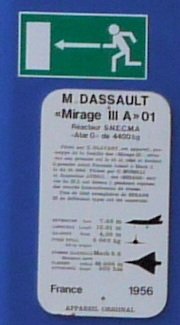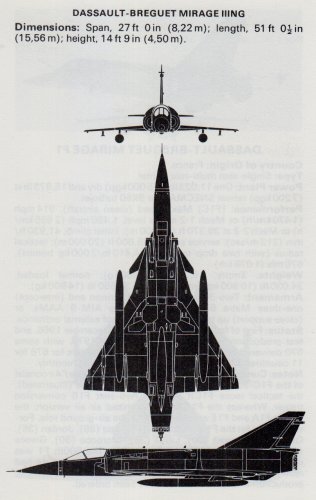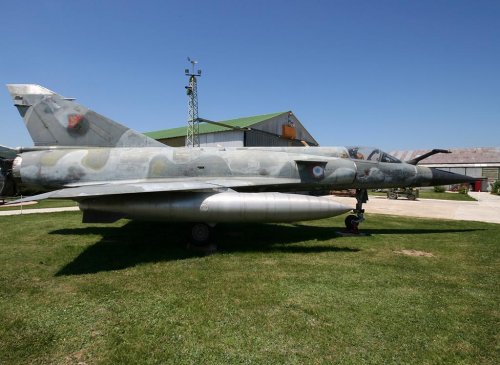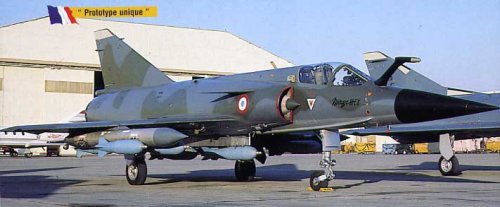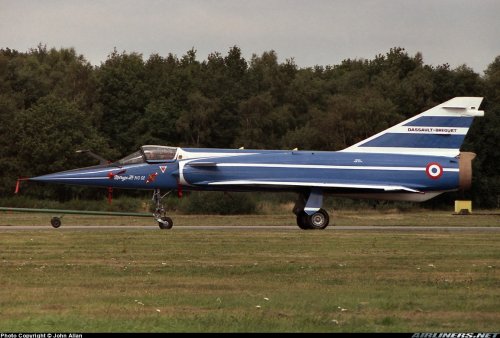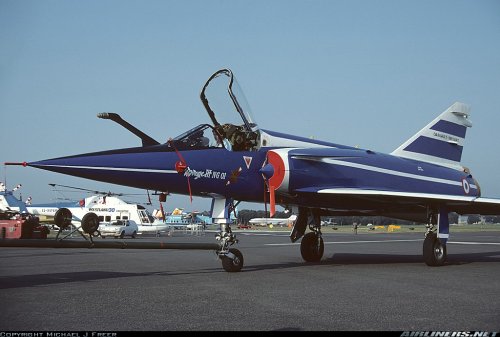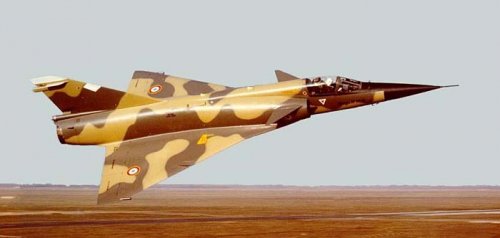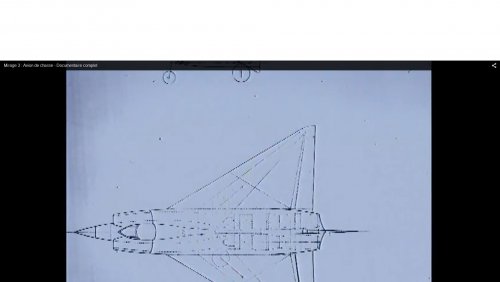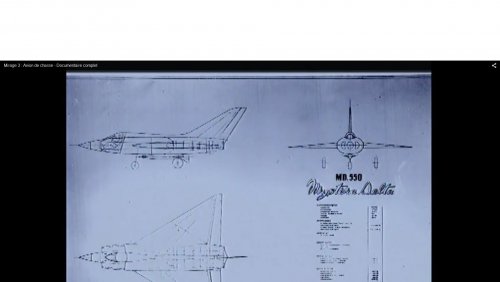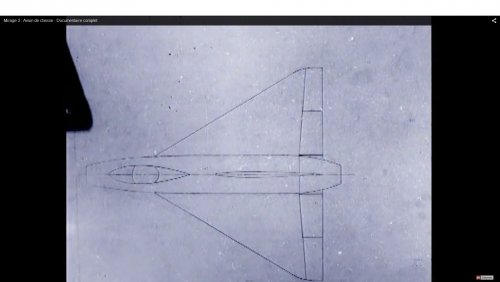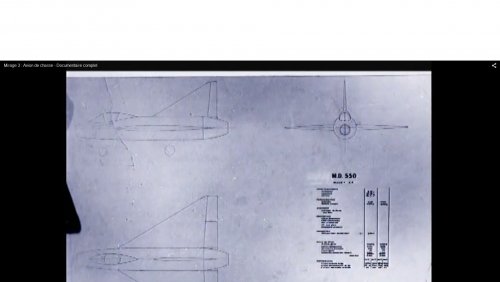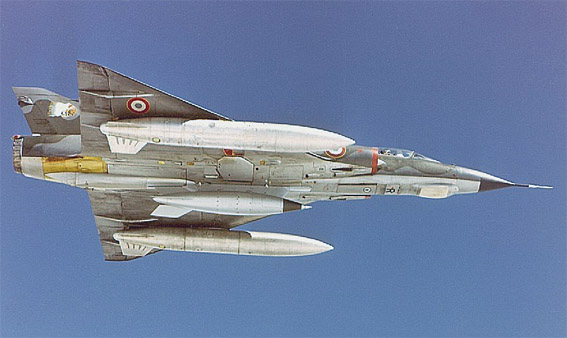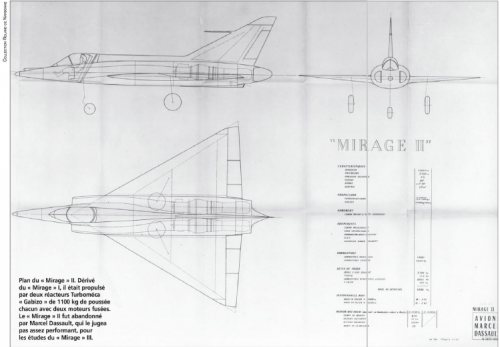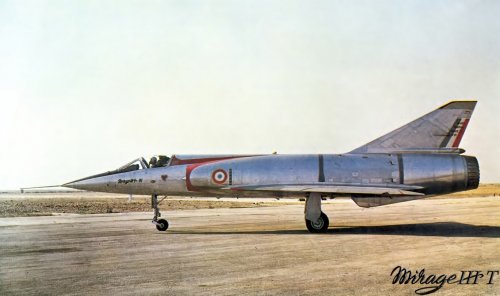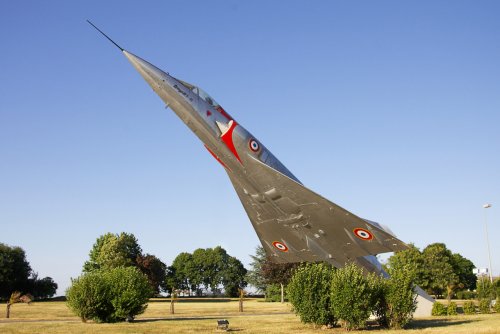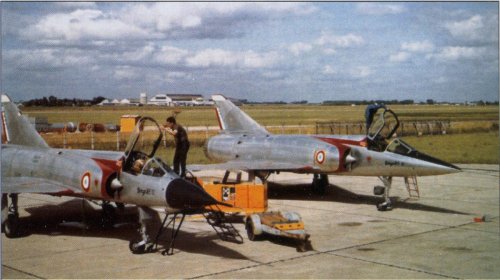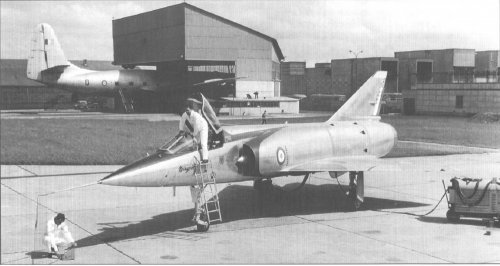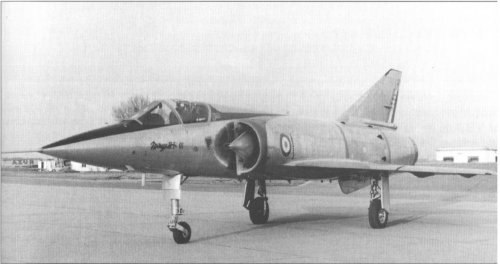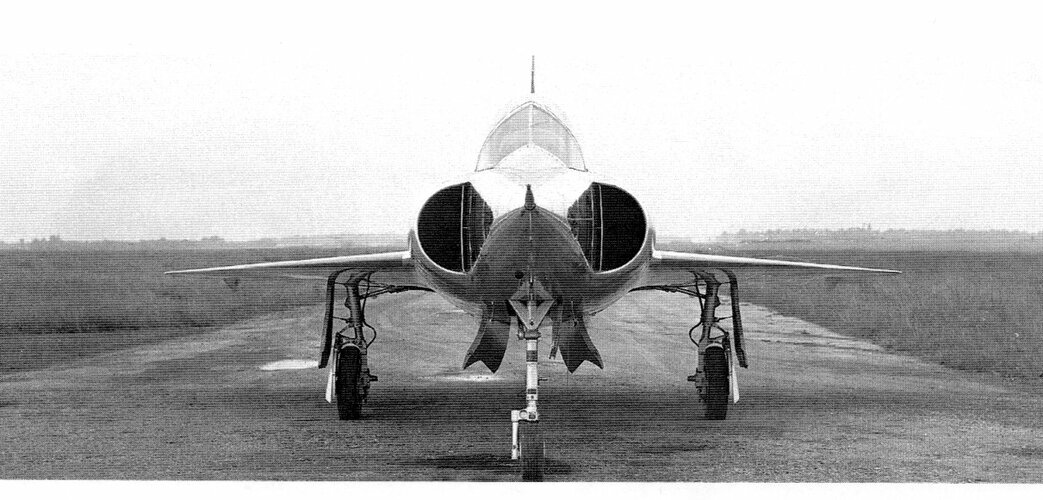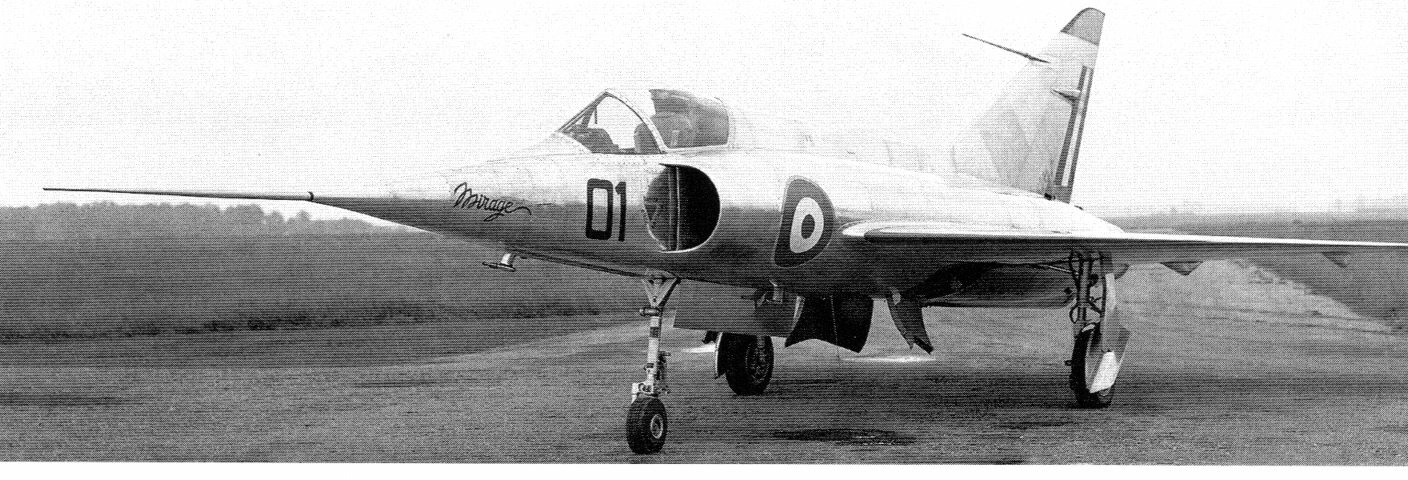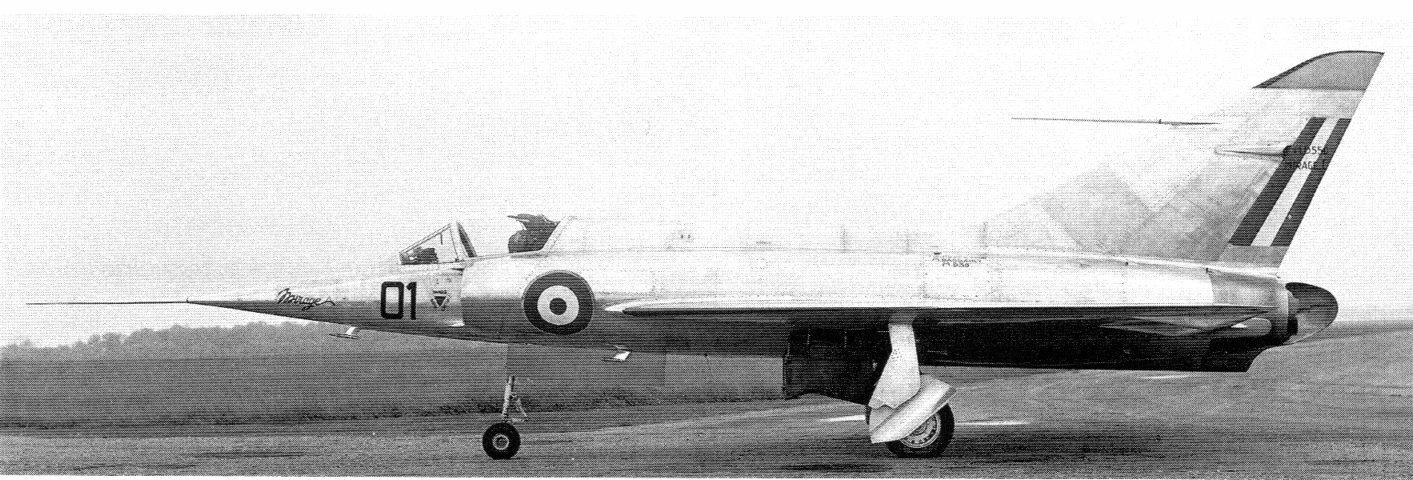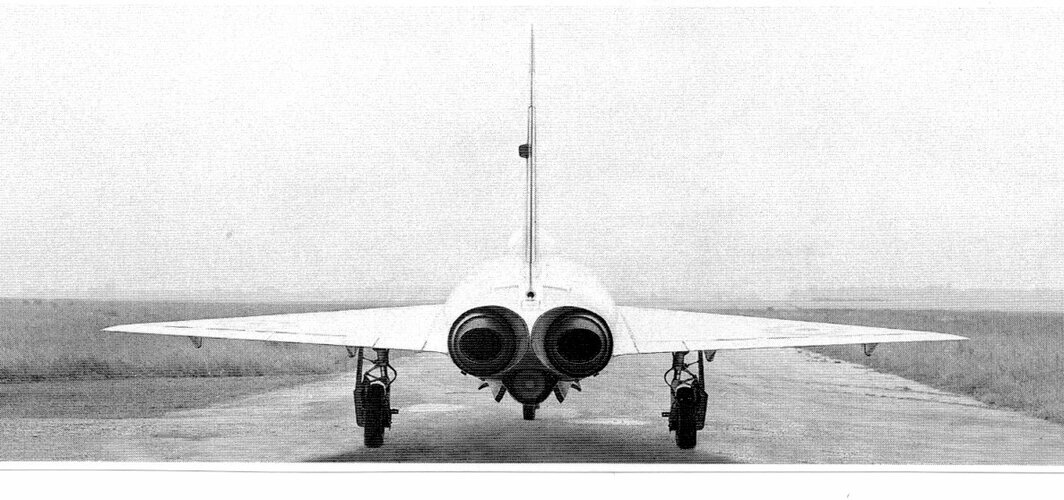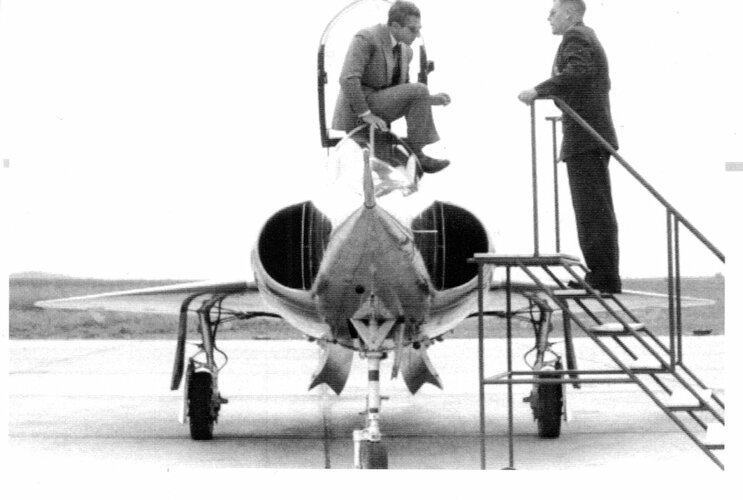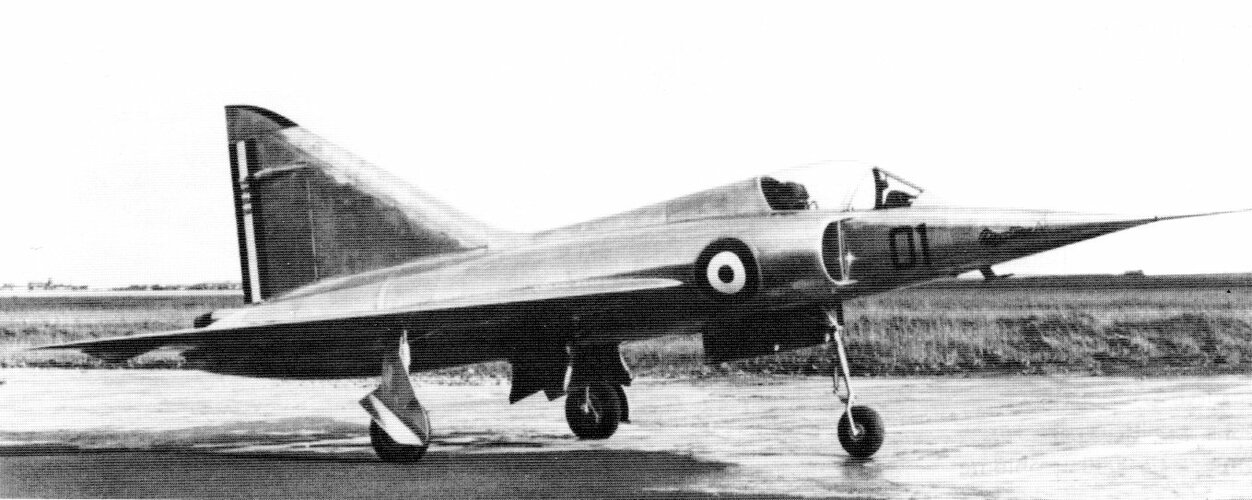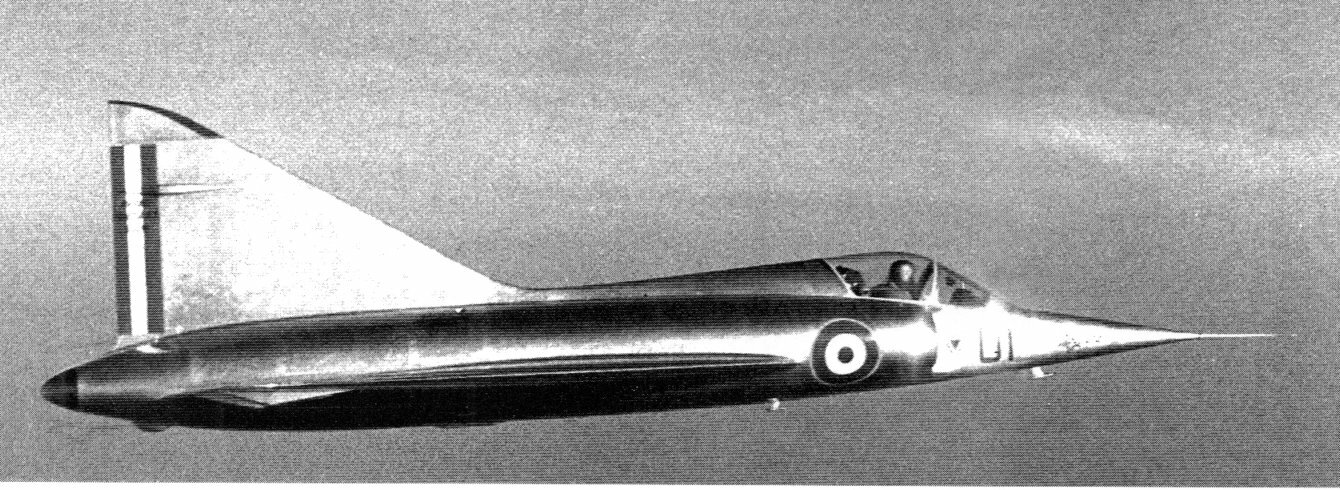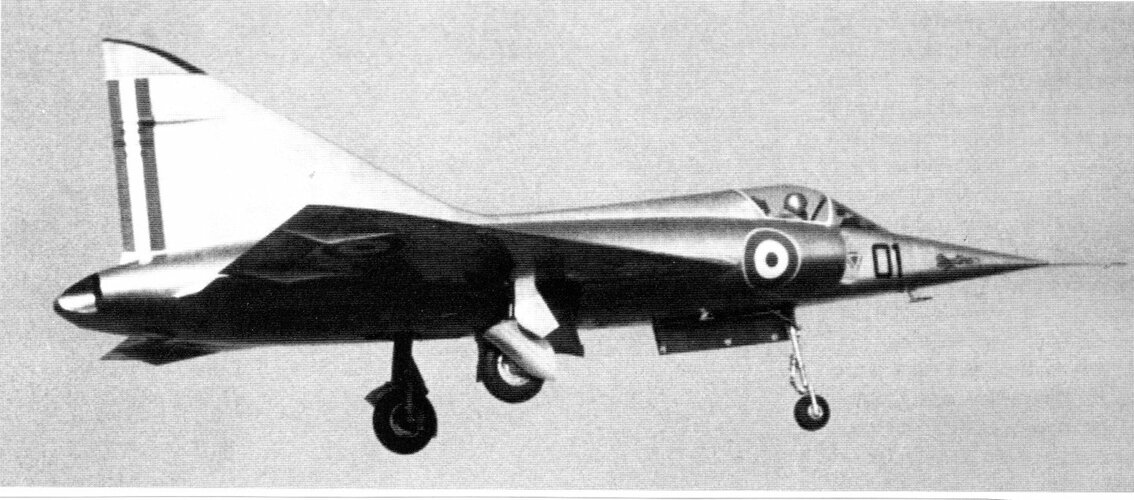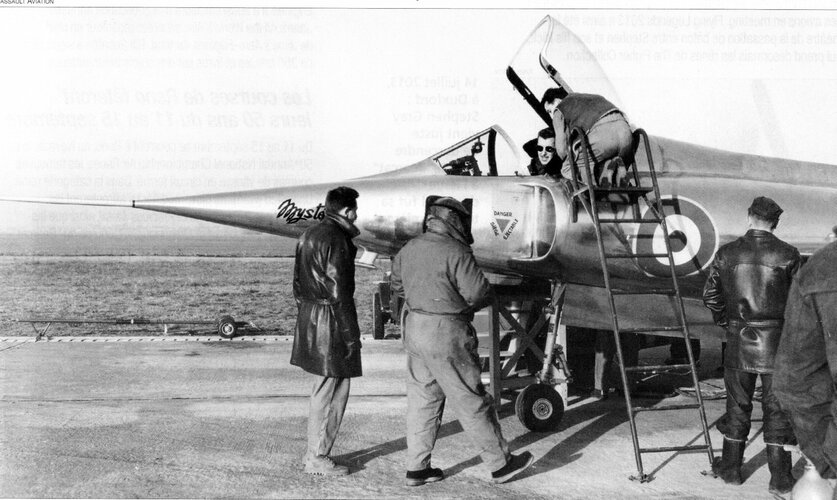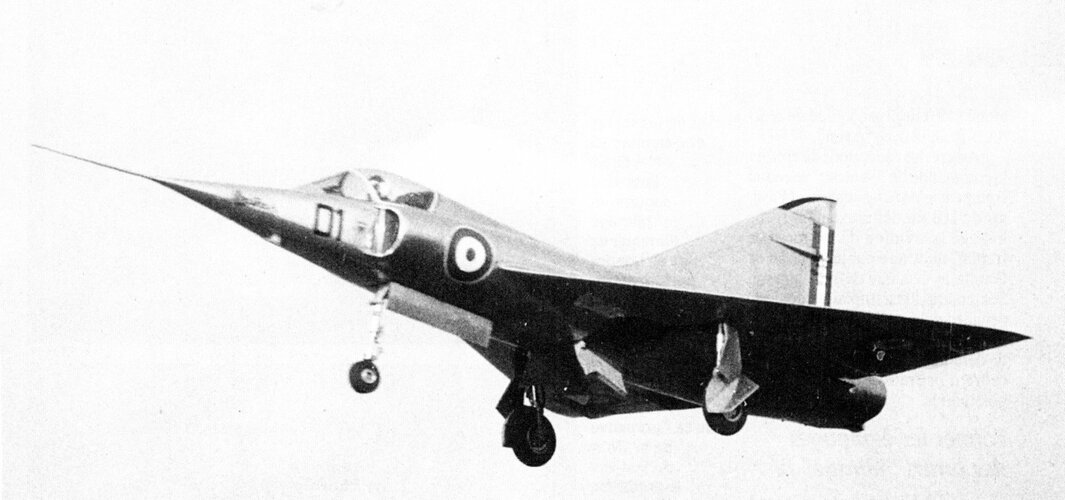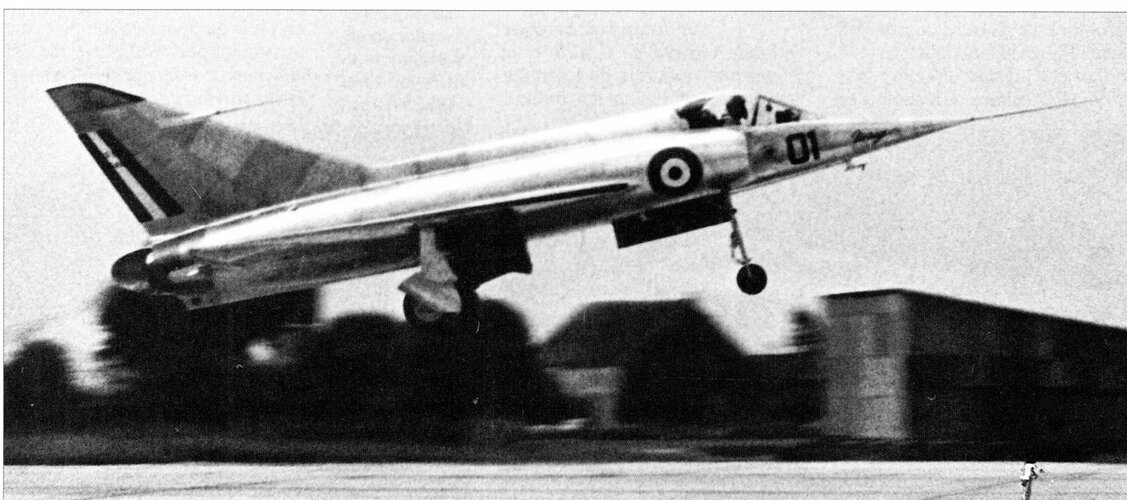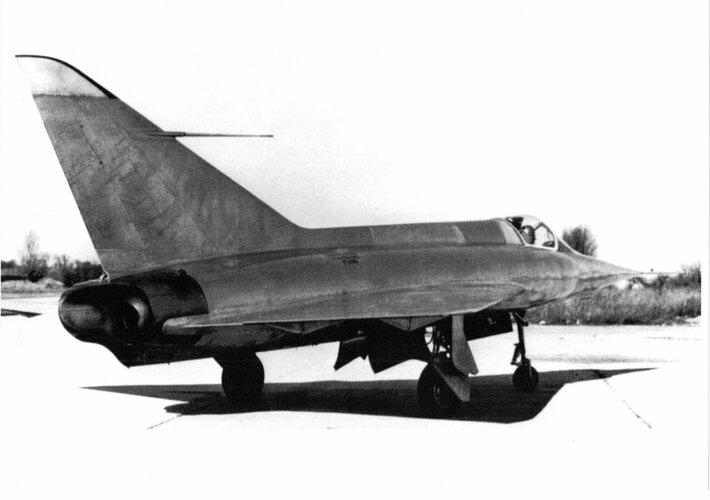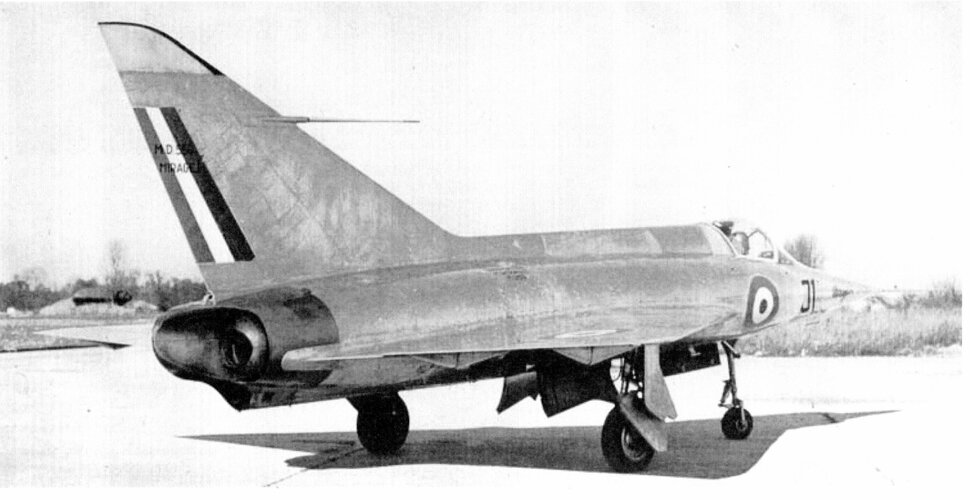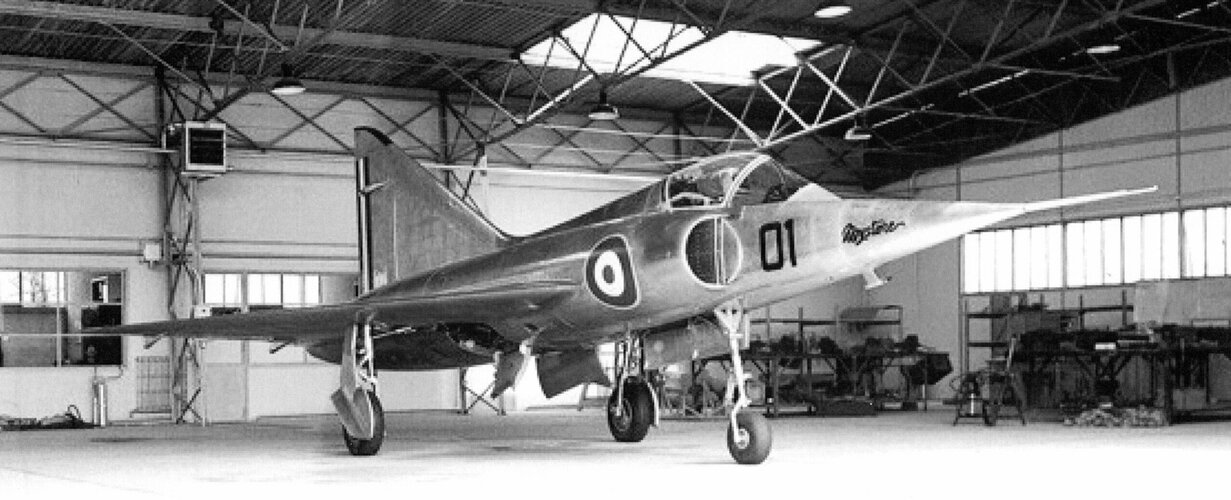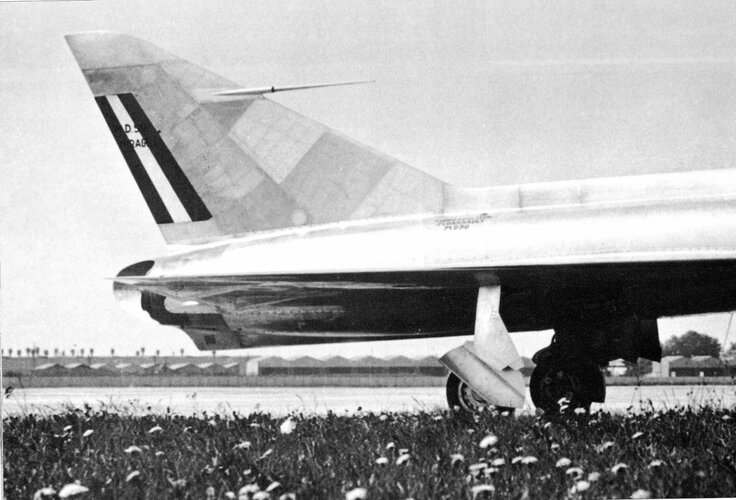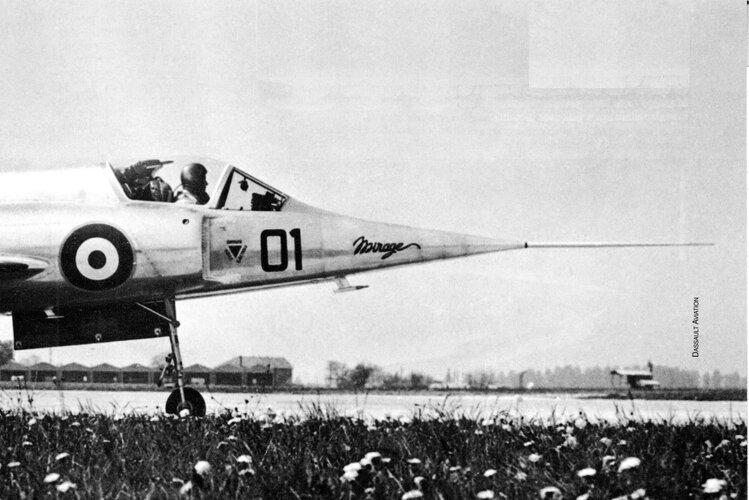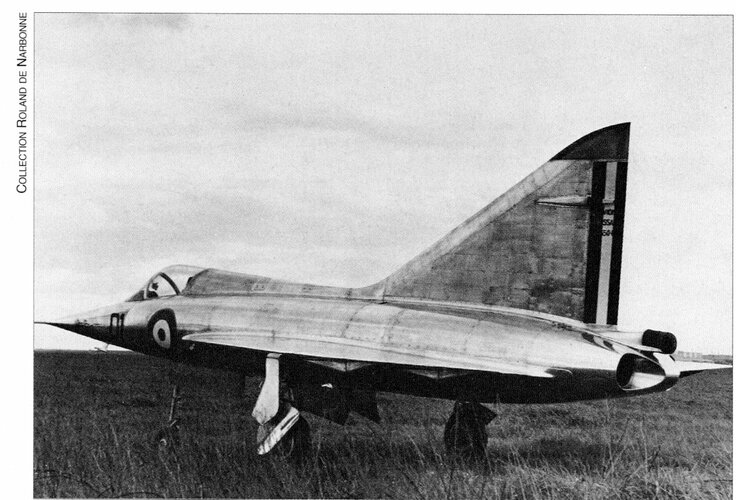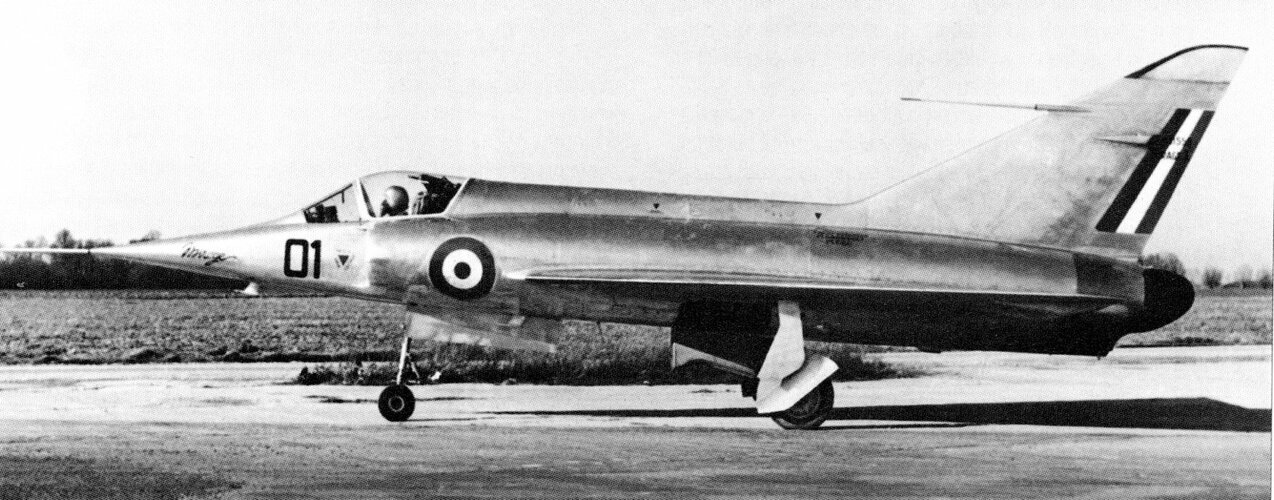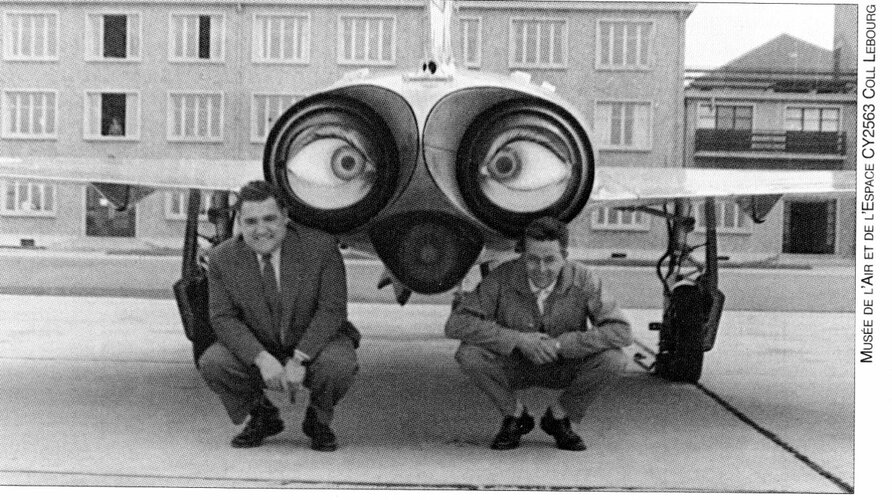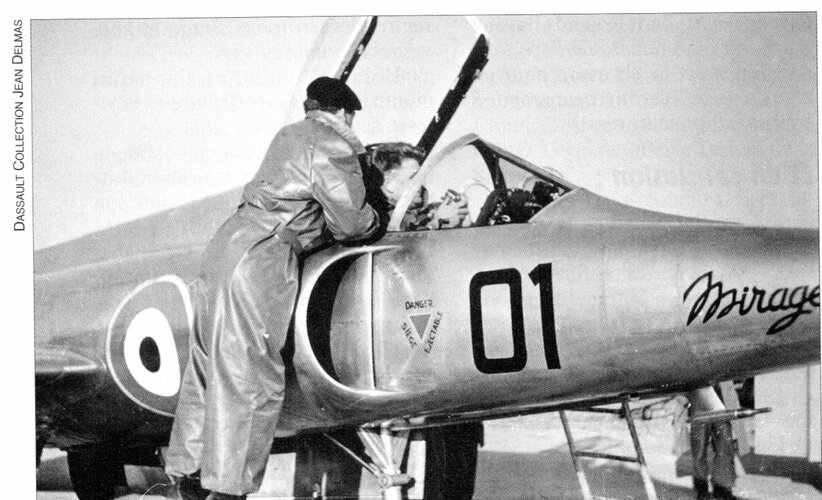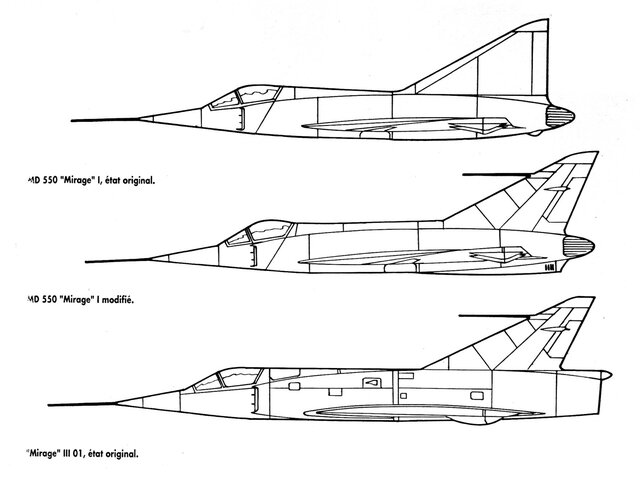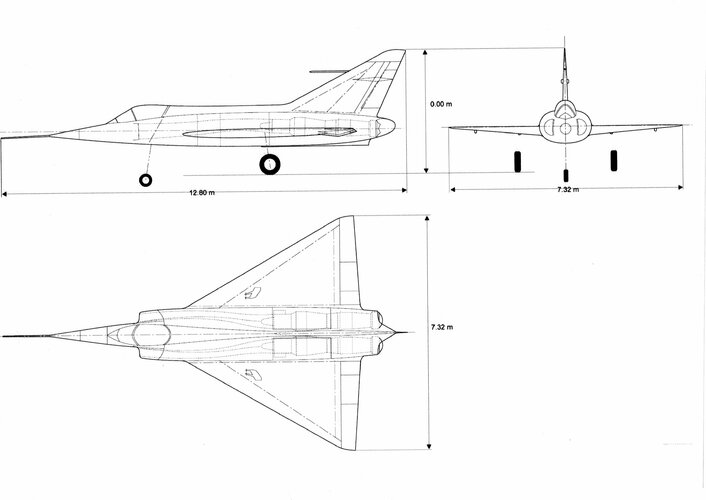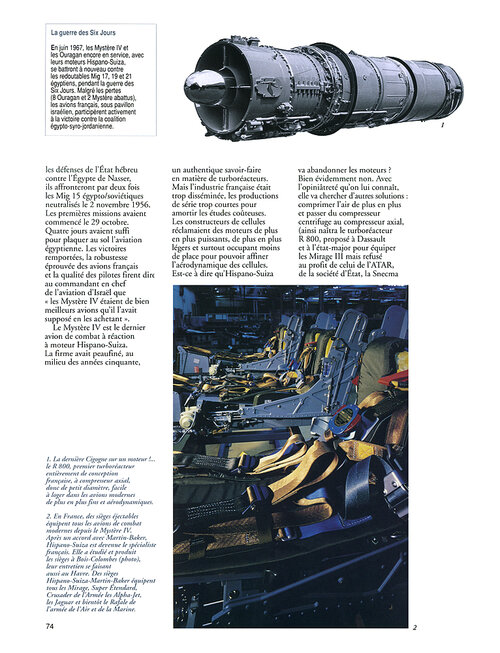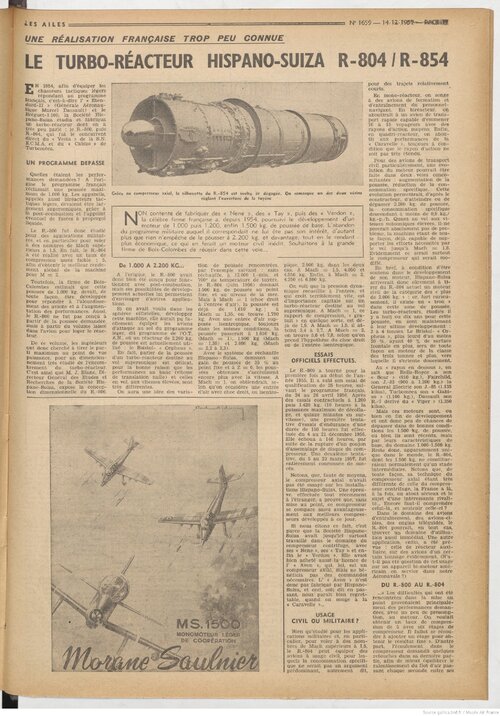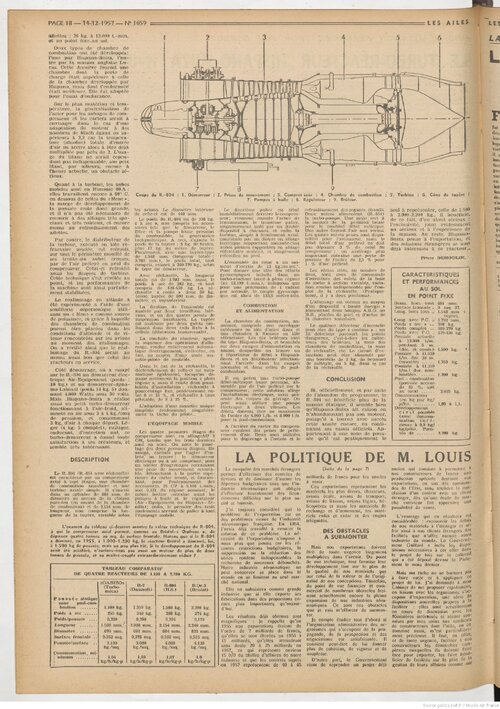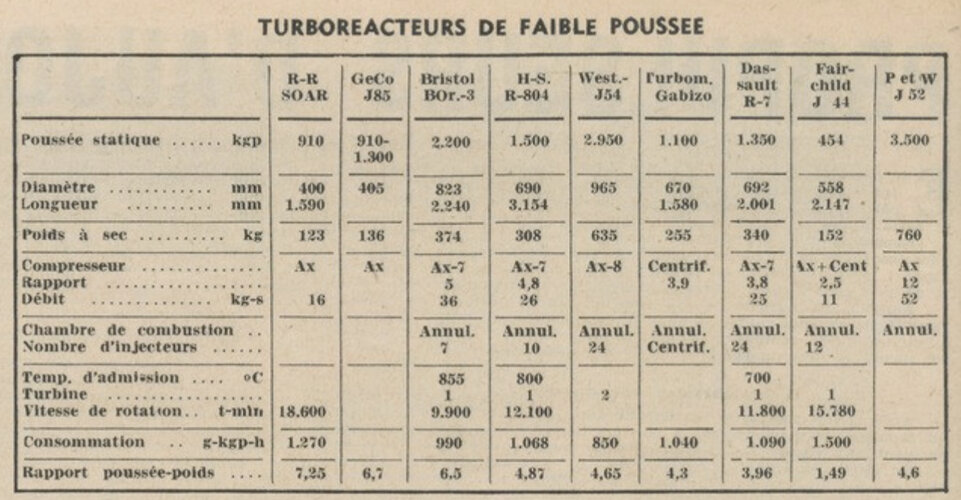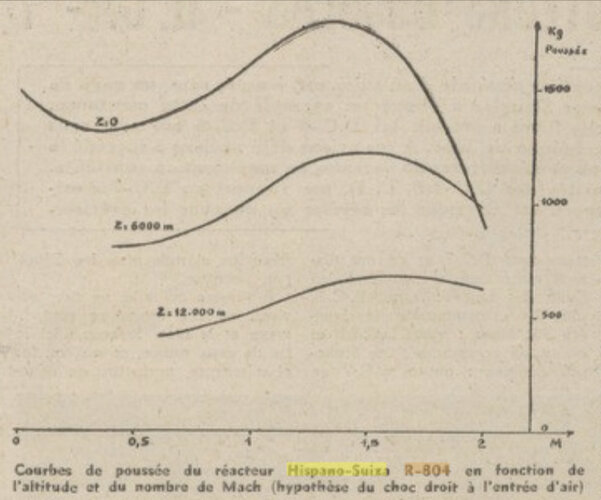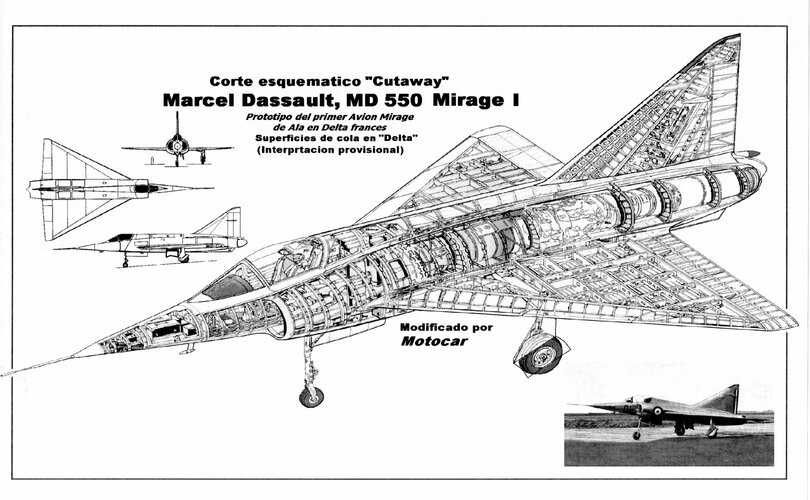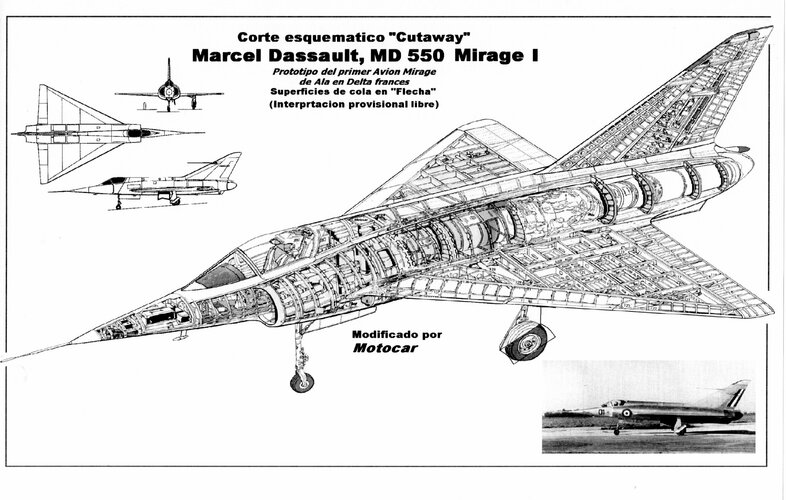You are using an out of date browser. It may not display this or other websites correctly.
You should upgrade or use an alternative browser.
You should upgrade or use an alternative browser.
I realise that. It is still interesting that given the focus is the Mirage that the A-7 is still shown.
- Joined
- 6 November 2010
- Messages
- 4,224
- Reaction score
- 3,145
topspeed3 said:Is it possible to get the main dimensions of this Mirage IIIA-01 ?
Code:
Length: 14.20m
Span: 8.22m
Height: 4.25m
Wing area: 34m2topspeed3
ACCESS: Secret
- Joined
- 31 January 2011
- Messages
- 299
- Reaction score
- 81
I think you data is inaccurate on the subject. IIIA-01 is the first actuel Mirage prototype..it was a metre shorter than your info indicates.Arjen said:topspeed3 said:Is it possible to get the main dimensions of this Mirage IIIA-01 ?Source: 'Mirage III - les monoréacteurs Dassault à aile delta - Tome 1' by Bernard Chenel, Eric Moreau and Patrick Audouin.Code:Length: 14.20m Span: 8.22m Height: 4.25m Wing area: 34m2
- Joined
- 6 November 2010
- Messages
- 4,224
- Reaction score
- 3,145
All I have access to are books and magazines, no primary sources.topspeed3 said:I think you data is inaccurate on the subject. IIIA-01 is the first actuel Mirage prototype..it was a metre shorter than your info indicates.
Mirage III-001 is the first Mirage III prototype, Mirage III A-01 is the first pre-series Mirage III
The data I quote are from Chenel/Moreau/Audouin, page 25.
From the same page, data for Mirage III-001:
Span: 7.58m
Length: 12.65m
Height: 4.68m
Wing area: 29m2
Another source, 'Prototypes de l'aviation Française 1945-1960' by Jean-Claude Fayer, E-T-A-I 2002, page 89, quotes the same
length (14.20m) and
span (8.22m)
for Mirage III A-01 as Chenel/Moreau/Audouin.
Fayer's Mirage III-001 data:
span 7.65m,
length 12.81m
- slightly different from Chenel/Moreau/Audouin.
If you have sources that quote different data, feel free to provide them.
- Joined
- 6 November 2010
- Messages
- 4,224
- Reaction score
- 3,145
Fortunately, there is a way to settle this issue once and for all. Mirage III A-01 is preserved in the Le Bourget museum, along with much other exciting stuff. All you need is a ladder and a tape measure to determine length, height and span.

I was there two months ago, and surely you can access the prototypes... and even touch them. Those blue metal "barriers" are not that useful.
I put my head (and phone camera) below the Mirage III-V, where a pack of RB-162 lift jets once stood.
As said before, the Mirage III-01 and III-A01 are not the same; the one at le Bourget is the IIIA-01. The III-01 no longer exists (unfortunately) since its airframe was re-used for the Balzac V VTOL prototype, which crashed two times and killed two pilots (Pinier and Neale).
It can be said the Mirage III-01 career ended with Neale crash in September 1965, when the Balzac was not repaired (and scrapped).
I put my head (and phone camera) below the Mirage III-V, where a pack of RB-162 lift jets once stood.
As said before, the Mirage III-01 and III-A01 are not the same; the one at le Bourget is the IIIA-01. The III-01 no longer exists (unfortunately) since its airframe was re-used for the Balzac V VTOL prototype, which crashed two times and killed two pilots (Pinier and Neale).
It can be said the Mirage III-01 career ended with Neale crash in September 1965, when the Balzac was not repaired (and scrapped).
topspeed3
ACCESS: Secret
- Joined
- 31 January 2011
- Messages
- 299
- Reaction score
- 81
Archibald said:I was there two months ago, and surely you can access the prototypes... and even touch them. Those blue metal "barriers" are not that useful.
I put my head (and phone camera) below the Mirage III-V, where a pack of RB-162 lift jets once stood.
As said before, the Mirage III-01 and III-A01 are not the same; the one at le Bourget is the IIIA-01. The III-01 no longer exists (unfortunately) since its airframe was re-used for the Balzac V VTOL prototype, which crashed two times and killed two pilots (Pinier and Neale).
It can be said the Mirage III-01 career ended with Neale crash in September 1965, when the Balzac was not repaired (and scrapped).
I checked this as well...looks like 13.01 meters ?
Attachments
Kiltonge
Greetings Earthling
- Joined
- 24 January 2013
- Messages
- 451
- Reaction score
- 585
- Joined
- 26 May 2006
- Messages
- 32,648
- Reaction score
- 11,841
C
CostasTT
Guest
Mirage IIING (photos) and Mirage IIIEX (photos and links):
http://www.maquetland.com/article-phototheque/389-dassault-mirage-iii-ex-prototype-montelimar
http://www.meacmtl.com/mirage_111_ex.html
http://www.maquetland.com/article-phototheque/389-dassault-mirage-iii-ex-prototype-montelimar
http://www.meacmtl.com/mirage_111_ex.html
Attachments
Deltafan
ACCESS: Top Secret
- Joined
- 8 May 2006
- Messages
- 1,569
- Reaction score
- 1,810
Hi everybody,
In this 1996 french movie (from a DVD) about the Mirage III,
http://www.dailymotion.com/video/x1n18un_mirage-3-avion-de-chasse-documentaire-complet_school
there were these pictures : (MD 550 project from 1951 and 1952)
(sorry, i don't know why, but i could not download 3 of the 4 complete pictures. Maybe somebody can get better pictures)
The 1952 project is known on Secretprojects, but I think that this is the first time that we can see it so.
I did not know the 1951 project. It looks like a mix of a Dassault Ouragan or Mystère and (the rear of) the Convair XP-92.
In this 1996 french movie (from a DVD) about the Mirage III,
http://www.dailymotion.com/video/x1n18un_mirage-3-avion-de-chasse-documentaire-complet_school
there were these pictures : (MD 550 project from 1951 and 1952)
(sorry, i don't know why, but i could not download 3 of the 4 complete pictures. Maybe somebody can get better pictures)
The 1952 project is known on Secretprojects, but I think that this is the first time that we can see it so.
I did not know the 1951 project. It looks like a mix of a Dassault Ouragan or Mystère and (the rear of) the Convair XP-92.
Attachments
Deltafan
ACCESS: Top Secret
- Joined
- 8 May 2006
- Messages
- 1,569
- Reaction score
- 1,810
Petrus said:I can't watch the movie - it doesn't start (while other films at dailymotion.com do).
Any ideas what to do?
Piotr
I don't know. Maybe it's not seeable out of France.
But the same movie is available on Youtube (this Youtube movie is seeable only on Youtube).
Try on Google search with
Mirage 3 : Avion de chasse - Documentaire complet
It's the same title for Youtube and Dailymotion.
MD 550 - 1951 is seeable around 9'10"
MD 550 - 1952 is seeable around 11'50"
- Joined
- 13 August 2007
- Messages
- 7,134
- Reaction score
- 6,471
Fantastic find, Deltafan
With a Surprise for me: the Real Reason why German Luftwaffe not got the Mirage III
Most the story you hear is dat Marcel Dassault refused to sell to Germany because of his experience during Second world war in Nazi concentration camps.
In this video his son Serge tell another story:
The Luftwaffe had send a Testpilot to France to test the smaller subsonic Mirage prototype, he could not handle the airplane right and had other problem to fly it.
after this experience the Testpilot write a extrem negative report about Mirage, not recommending it for Luftwaffe
3 months later the supersonic Mirage III prototype take off and on desk of German Minster of Defense Franz Joseph Strauss lands this Report...
That explain why the Luftwaffe take F-104, another detail by Serge Dassault had the German Government taken the Mirage III Dassault would have seek cooperation with German Aerospace industry
maybe so Serge Dassault would the company be today a French German company (at 35:00 in Video)
With a Surprise for me: the Real Reason why German Luftwaffe not got the Mirage III
Most the story you hear is dat Marcel Dassault refused to sell to Germany because of his experience during Second world war in Nazi concentration camps.
In this video his son Serge tell another story:
The Luftwaffe had send a Testpilot to France to test the smaller subsonic Mirage prototype, he could not handle the airplane right and had other problem to fly it.
after this experience the Testpilot write a extrem negative report about Mirage, not recommending it for Luftwaffe
3 months later the supersonic Mirage III prototype take off and on desk of German Minster of Defense Franz Joseph Strauss lands this Report...
That explain why the Luftwaffe take F-104, another detail by Serge Dassault had the German Government taken the Mirage III Dassault would have seek cooperation with German Aerospace industry
maybe so Serge Dassault would the company be today a French German company (at 35:00 in Video)
Michel Van said:Fantastic find, Deltafan
With a Surprise for me: the Real Reason why German Luftwaffe not got the Mirage III
Most the story you hear is dat Marcel Dassault refused to sell to Germany because of his experience during Second world war in Nazi concentration camps.
In this video his son Serge tell another story:
The Luftwaffe had send a Testpilot to France to test the smaller subsonic Mirage prototype, he could not handle the airplane right and had other problem to fly it.
after this experience the Testpilot write a extrem negative report about Mirage, not recommending it for Luftwaffe
3 months later the supersonic Mirage III prototype take off and on desk of German Minster of Defense Franz Joseph Strauss lands this Report...
That explain why the Luftwaffe take F-104, another detail by Serge Dassault had the German Government taken the Mirage III Dassault would have seek cooperation with German Aerospace industry
maybe so Serge Dassault would the company be today a French German company (at 35:00 in Video)
Well, one can wonder why that pilot report was so negative...
https://en.m.wikipedia.org/wiki/Lockheed_bribery_scandals
- Joined
- 11 March 2006
- Messages
- 8,606
- Reaction score
- 3,048
To my opinion, the rejection of the Mirage III and the preference of the F-104 just was
a result of the "nuclear sharing", that means of the German ambitions to provide launching
systems for nuclear weapons. This was an important goal for the German government then,
especially of course for its Minister of Defence Franz-Josef Strauß. The only country able
and willing to supply such weapons to Germany then were the US, so the choice of an aircraft
somehow was predetermined. Of course that doesn't mean, that there was no bribery, but to
my opinion the often heard statement "the Starfighter only was chosen, because Lockheed
paid several millions US $ ..." fells somehow short. The opinions and prefeernces of the men,
who had to fly these aircraft certainly weigh little for political decisions in Germany, too !
a result of the "nuclear sharing", that means of the German ambitions to provide launching
systems for nuclear weapons. This was an important goal for the German government then,
especially of course for its Minister of Defence Franz-Josef Strauß. The only country able
and willing to supply such weapons to Germany then were the US, so the choice of an aircraft
somehow was predetermined. Of course that doesn't mean, that there was no bribery, but to
my opinion the often heard statement "the Starfighter only was chosen, because Lockheed
paid several millions US $ ..." fells somehow short. The opinions and prefeernces of the men,
who had to fly these aircraft certainly weigh little for political decisions in Germany, too !
I agree this pilot opinion must have weighted very little on the balance.
Even if it maybe served to justify the official decision in reports.
But was it really a german initiative to be able to deliver (US owned)
nuclear weapons from a fighter plane, I doubt about that.
Wasn't it more a US decision, even if it had to look like a german one. After all
NATO is a US led (and even more so at the time) organisation.
Even if it maybe served to justify the official decision in reports.
But was it really a german initiative to be able to deliver (US owned)
nuclear weapons from a fighter plane, I doubt about that.
Wasn't it more a US decision, even if it had to look like a german one. After all
NATO is a US led (and even more so at the time) organisation.
Jemiba said:To my opinion, the rejection of the Mirage III and the preference of the F-104 just was a result of the "nuclear sharing", that means of the German ambitions to provide launching systems for nuclear weapons....The only country able and willing to supply such weapons to Germany then were the US, so the choice of an aircraft somehow was predetermined....
There may be some truth in that, although we need to remember that the US was perfectly willing to supply nuclear weapons for British designed Canberras and Valiants.
I suspect that the Germans preferred the F-104 because it was the better aircraft, given Germany's perceived requirements. The Mirage (or almost any of the other contenders) would probably have made a better fighter. But Germany did not want a fighter. It wanted a bomber, with, as you note, nuclear capability. I suspect that Germany referred to the required aircraft as fighter due to the political and historical sensibilities of the time. Given the perceived tactical situation at the time, the Mirage would have made a poor bomber, while, quite serendipitously, the F-104, would have seemed near perfect.
From the end of WW2 through the late 1950s, bombers were designed to achieve the maximum possible height over the target. Altitude gave the attacker a critical time advantage. Given a high enough approach, a bomber could bomb its target and depart before an interceptor could respond to an alert and climb up to attack altitude. Good altitude performance demanded comparatively large wing area and low wing loading. The chosen wing planform depended on the lift-to-drag ratio required for a given speed. Subsonic aircraft like the B-47, B-52, Valiant, and Victor were given large-area high aspect ratio, moderately swept wings. Later supersonic equivalents like the B-58 received an equivalent, large-area planform with the low aspect ratio required for low drag at supersonic speed: the delta wing.
The Mirage was designed as a light, fast-climbing, supersonic interceptor capable of reaching a high-altitude bomber in time to make an attack. Like the larger and heavier F-102, F-106, and CF-105, it adopted the same delta wing for the same reason the B-58 did: large area for good climb and maneuverability at altitude combined with low supersonic drag.
But at the time when the F-104 was selected, the West's bomber forces were changing tactics. Radar warning and tracking, guided surface-to-air missiles, and supersonic, ground-controlled interceptors like the Mirage appeared to eliminate the high-altitude bomber's advantages. To survive and carry out their missions, bombers had to regain their time advantage over the defense. It looked like they could do so by flying fast and low. Air-defense radars that gave reliable, long-range, early warning of high-level attacks generally performed badly against low-level targets. Detection ranges were short, so the radar nets could give little or no advance warning.
When B-52s and Valiants were assigned to high-speed, low altitude missions, however, airframes and aircrews suffered severely. Low-altitude air is turbulent, and airplanes with large wing areas and low wing loading respond immediately and violently to every gust and bump. Flying such an airplane at low level was be like driving a light, responsive sports car too fast on a washboard road: gusts and rough air that would be inconsequential at lower speeds subject pilot and airframe to such high frequency pounding that loss of control or structural failure are real dangers. When I was a boy, I visited the Johnsville Naval Air Development Center, where the US Navy did physiological and structural testing. They showed us a rig that simulated what pilots might face in low-level transonic flight. As I remember it, the instrumented test dummy and his ejection seat were just a blur. Experience and laboratory work like that at Johnsville quickly showed that aircrews could operate retasked high-altitude aircraft at low level or at high speed, but not at both, at least for any extended time. The new, low-level, high-speed tactics would only be practical for specialized, low-altitude bombers that had small-area, highly loaded wings, like the later TSR2 and Jaguar.
The F-104 just happened to fit this emerging requirement. While Lockheed designed the Starfighter for high-altitude, the requirement was for a high-G, supersonic dogfighter rather than a bomber interceptor. Supersonic turns would have subjected a conventional wing to enormous stresses and required an impractically strong and heavy structure. So Lockheed adopted a stiff, short-span, heavily loaded wing design that turned out to be almost ideal for high-speed, low-level flight. The USAF never actually needed the supersonic dogfighter, and few F-104As were built. But, once the rest of the structure was beefed up to match the inherent capabilities of the wing and the excellent J-79 engine, the F-104G was almost exactly what the Germans wanted.
In my opinion, Germany's requirements were short-sighted, narrow-minded, and overly theoretical. In hindsight, a single-purpose, short-range, low-level, nuclear-armed attack bomber was not the best choice. A general-purpose fighter-bomber would probably have been a better choice in the long run. But, on the other hand, it is hard to argue with success. The F-104G could be counted as a success simply because it never had to be used in its intended role.
- Joined
- 2 August 2006
- Messages
- 3,170
- Reaction score
- 1,144
iverson said:Jemiba said:To my opinion, the rejection of the Mirage III and the preference of the F-104 just was a result of the "nuclear sharing", that means of the German ambitions to provide launching systems for nuclear weapons....The only country able and willing to supply such weapons to Germany then were the US, so the choice of an aircraft somehow was predetermined....
There may be some truth in that, although we need to remember that the US was perfectly willing to supply nuclear weapons for British designed Canberras and Valiants.
I suspect that the Germans preferred the F-104 because it was the better aircraft, given Germany's perceived requirements. The Mirage (or almost any of the other contenders) would probably have made a better fighter. But Germany did not want a fighter. It wanted a bomber, with, as you note, nuclear capability. I suspect that Germany referred to the required aircraft as fighter due to the political and historical sensibilities of the time. Given the perceived tactical situation at the time, the Mirage would have made a poor bomber, while, quite serendipitously, the F-104, would have seemed near perfect.
From the end of WW2 through the late 1950s, bombers were designed to achieve the maximum possible height over the target. Altitude gave the attacker a critical time advantage. Given a high enough approach, a bomber could bomb its target and depart before an interceptor could respond to an alert and climb up to attack altitude. Good altitude performance demanded comparatively large wing area and low wing loading. The chosen wing planform depended on the lift-to-drag ratio required for a given speed. Subsonic aircraft like the B-47, B-52, Valiant, and Victor were given large-area high aspect ratio, moderately swept wings. Later supersonic equivalents like the B-58 received an equivalent, large-area planform with the low aspect ratio required for low drag at supersonic speed: the delta wing.
The Mirage was designed as a light, fast-climbing, supersonic interceptor capable of reaching a high-altitude bomber in time to make an attack. Like the larger and heavier F-102, F-106, and CF-105, it adopted the same delta wing for the same reason the B-58 did: large area for good climb and maneuverability at altitude combined with low supersonic drag.
But at the time when the F-104 was selected, the West's bomber forces were changing tactics. Radar warning and tracking, guided surface-to-air missiles, and supersonic, ground-controlled interceptors like the Mirage appeared to eliminate the high-altitude bomber's advantages. To survive and carry out their missions, bombers had to regain their time advantage over the defense. It looked like they could do so by flying fast and low. Air-defense radars that gave reliable, long-range, early warning of high-level attacks generally performed badly against low-level targets. Detection ranges were short, so the radar nets could give little or no advance warning.
When B-52s and Valiants were assigned to high-speed, low altitude missions, however, airframes and aircrews suffered severely. Low-altitude air is turbulent, and airplanes with large wing areas and low wing loading respond immediately and violently to every gust and bump. Flying such an airplane at low level was be like driving a light, responsive sports car too fast on a washboard road: gusts and rough air that would be inconsequential at lower speeds subject pilot and airframe to such high frequency pounding that loss of control or structural failure are real dangers. When I was a boy, I visited the Johnsville Naval Air Development Center, where the US Navy did physiological and structural testing. They showed us a rig that simulated what pilots might face in low-level transonic flight. As I remember it, the instrumented test dummy and his ejection seat were just a blur. Experience and laboratory work like that at Johnsville quickly showed that aircrews could operate retasked high-altitude aircraft at low level or at high speed, but not at both, at least for any extended time. The new, low-level, high-speed tactics would only be practical for specialized, low-altitude bombers that had small-area, highly loaded wings, like the later TSR2 and Jaguar.
The F-104 just happened to fit this emerging requirement. While Lockheed designed the Starfighter for high-altitude, the requirement was for a high-G, supersonic dogfighter rather than a bomber interceptor. Supersonic turns would have subjected a conventional wing to enormous stresses and required an impractically strong and heavy structure. So Lockheed adopted a stiff, short-span, heavily loaded wing design that turned out to be almost ideal for high-speed, low-level flight. The USAF never actually needed the supersonic dogfighter, and few F-104As were built. But, once the rest of the structure was beefed up to match the inherent capabilities of the wing and the excellent J-79 engine, the F-104G was almost exactly what the Germans wanted.
In my opinion, Germany's requirements were short-sighted, narrow-minded, and overly theoretical. In hindsight, a single-purpose, short-range, low-level, nuclear-armed attack bomber was not the best choice. A general-purpose fighter-bomber would probably have been a better choice in the long run. But, on the other hand, it is hard to argue with success. The F-104G could be counted as a success simply because it never had to be used in its intended role.
Actually, except for a screw up with a demo by Grumman, some bribery by Lockheed, and some governmental spreading the work around, The Grumman Super Tiger was actually Germany's choice, based on performance. But, that's all water under the bridge and holes in the ground now.
- Joined
- 2 August 2006
- Messages
- 3,170
- Reaction score
- 1,144
iverson said:Interesting. I've never heard that before. Can you recommend a source?
Corky Myer's Flight Journal. I've also read it in other publications, but I don't recall where. It might have also been in the Navel Fighters Number Fourty Four on the Grumman Super Tiger, but it has been a while since I've read that book.
- Joined
- 21 May 2006
- Messages
- 2,703
- Reaction score
- 1,604
Archibald said:Wrong. Ever heard of the Mirage III-E variant ? it did the exact same job the German F-104s did - low level penetration with a AN-52 nuke on the belly. First flight happened on April 5, 1961

Great point Archibald !
Thanks for the pic. Are they larger drop tanks than the usual ones Im accustomed to seeing on the Mirage III series?
Regards
Pioneer
Last edited:
Deltafan
ACCESS: Top Secret
- Joined
- 8 May 2006
- Messages
- 1,569
- Reaction score
- 1,810
dan_inbox said:Ivran, what are your sources about the use of designation "MD 550" in 1951 ?
As far as know, the MD-550 was created by GAMD to respond to the call for tender issued by Armée de l’Air in February 1953 (to which SNCASO proposed the Trident and SNCASE the Durandal).
It would be quite an unusual commercial practice for the era to re-use an "old" pre-existing designation in such context.
Deltafan said:Try on Google search with
Mirage 3 : Avion de chasse - Documentaire complet
It's the same title for Youtube and Dailymotion.
MD 550 - 1951 is seeable around 9'10"
The commentator says :
Marcel Dassault s'intéresse bien-sûr lui aussi à l'aile delta. Toujours à l'affût de nouvelles possibilités, il fait, dès 1951 étudier un projet d'avion delta.
The project was designed before the tender.
Alas, the movie is too bad. It's impossible to read the data.
- Joined
- 6 November 2010
- Messages
- 4,224
- Reaction score
- 3,145
I haven't found a 3-view of the IIIT.elmayerle said:Does anyone have a good three-view drawing, with dimensions, of the Mirage IIIT? I want to "clone" the nozzle from a Mirage IIIV kit and model that one.
IIIT's dimensions in 'Mirage III - les monoréacteurs Dassault à aile delta - Tome 3' by Bernard Chenel / Eric Moreau / Michel Liébert, DTU 2008:
Length without probe: 15.37 m
Span: 8.48 m
Height: 4.60 m
Weight empty: 7870 kg
Take off weight: 11230 kg
- the Mirage IIIT used a modified IIIE-wing
- starting from frame 19, its fuselage was fatter than the IIIE's - 40 frames in total
- inlet shock-cones were at a downward angle of 25o
- 18 dm2 airbrakes instead of the IIIE's 13 dm2 airbrakes
At some time Mirage IIIT-01 was on display as a gate guard at Base Aérienne 721, Rochefort. It might still be there.
Sideview from http://pics-aeronef.discutfree.com/t3699-mirageiii
Gate guard view from http://aeronantesspotters.forumactif.com/t572-meeting2011-ba721-rochefort-meeting-de-l-air
Attachments
- Joined
- 6 November 2010
- Messages
- 4,224
- Reaction score
- 3,145
IIIT images scanned from Chenel / Moreau / Liébert.
Before IIIT-01's fourth flight, the intake lips were trimmed to improve low-speed engine performance.
<edit> better scan of third image
Before IIIT-01's fourth flight, the intake lips were trimmed to improve low-speed engine performance.
<edit> better scan of third image
Attachments
Deltafan
ACCESS: Top Secret
- Joined
- 8 May 2006
- Messages
- 1,569
- Reaction score
- 1,810
Hi everybody,
from the end of the book Mirage III, tome 3 (Chenel, Moreau, Liébert), DTU 2008 (page 405) :
MD 600 project from 1968 with one M53 or J79 engine (25 to 39% more power, 15 to 20% less consumption) :
-Mirage III frame but with integrated tanks (like the Mirage F1 and no more the flexible tanks of the Mirage III) : more kerosene
-Mirage F1 nose (to improve visibility for landing)
-10% more wing area (34,85 m² for the Mirage III => around 38,34 m² for MD 600)
-Wing with LERX (like the Mirage III V) for 5% more lift at high incidence
-flight control derivative of Mirage IV and Mirage III V, with two elevators for each wing
-empty weight : almost like Mirage III E (5915 kg for the III E)
-external load : 5 000 kg (4 000 kg for the III E)
-consolidated landing gear with two wheels in the front (like the Mirage F1)
-250 km more range than the III E at low altitude
-canard considered but not selected
from the end of the book Mirage III, tome 3 (Chenel, Moreau, Liébert), DTU 2008 (page 405) :
MD 600 project from 1968 with one M53 or J79 engine (25 to 39% more power, 15 to 20% less consumption) :
-Mirage III frame but with integrated tanks (like the Mirage F1 and no more the flexible tanks of the Mirage III) : more kerosene
-Mirage F1 nose (to improve visibility for landing)
-10% more wing area (34,85 m² for the Mirage III => around 38,34 m² for MD 600)
-Wing with LERX (like the Mirage III V) for 5% more lift at high incidence
-flight control derivative of Mirage IV and Mirage III V, with two elevators for each wing
-empty weight : almost like Mirage III E (5915 kg for the III E)
-external load : 5 000 kg (4 000 kg for the III E)
-consolidated landing gear with two wheels in the front (like the Mirage F1)
-250 km more range than the III E at low altitude
-canard considered but not selected
- Joined
- 28 November 2006
- Messages
- 699
- Reaction score
- 637
Deltafan said:Hi everybody,
In this 1996 french movie (from a DVD) about the Mirage III,
http://www.dailymotion.com/video/x1n18un_mirage-3-avion-de-chasse-documentaire-complet_school
there were these pictures : (MD 550 project from 1951 and 1952)
(sorry, i don't know why, but i could not download 3 of the 4 complete pictures. Maybe somebody can get better pictures)
The 1952 project is known on Secretprojects, but I think that this is the first time that we can see it so.
I did not know the 1951 project. It looks like a mix of a Dassault Ouragan or Mystère and (the rear of) the Convair XP-92.
Do you have any idea what engines the 1952 version would have had?
P.
Deltafan
ACCESS: Top Secret
- Joined
- 8 May 2006
- Messages
- 1,569
- Reaction score
- 1,810
Hi,Petrus said:Do you have any idea what engines the 1952 version would have had?
P.
impossible to see a prospective engine name for the plane on the 3 views drawing.
France launches a program of engines for light fighter in 1953 only. There were 3 competitors : SNECMA Vesta R 105, Hispano-Suiza R.800 (later R.854) and Turbomeca Gabizo. For its part Dassault launches, in 1953 too, a program with a derivative of the Armstrong Siddeley VIPER : the MD 30. No one of these programs survives the end of the fifties.
Only the Gabizo and the MD 30 will fly. Concerning two programs of Dassault : two MD 30 are on the MD 550 Mirage I (main flight 25/06/55) but because the Gabizo was not ready. and two Gabizo are on the Etendard II (main flight 23/07/56).
In the books Dassault 1945-1995 (Carlier/Berger Editions du chêne) It is wrote (pages 39, 40 and 41 in the book Les programmes and page 40 in the book L'entreprise) about :
-a Delta project from 1951
-a delta test program with model from 30/01/52.
-an official draft for Dassault from 27/02/52 by the Service technique aéronautique about a delta supersonic interceptor
-a forecast of Dassault from 15/05/52 about a 3 535 kg (empty and without engine) and 8 813 kg (ready to fight) Delta MD 550.
-an experimental lightened delta 3 800 kg (empty) announced on 13/01/1953 by Marcel Dassault to the Service technique aéronautique (it's a draft for an heavier figther)
-an answer of a MD 550 Delta with 2xGabizo to the Service technique aéronautique for the study of an official program from 20/02/1953 (the other answer is a 1xATAR MD 560).
-February 1953 : Marcel Dassault take the licence of the Armstrong Siddeley Viper because the french engines for the french ligthfighter program are not ready (in the book L'entreprise)
-23/04/53, Dassault foresees windtests to mach 1.4 for a delta interceptor
-25/06/53, french officials (DTIA) insists on a bi-engine plane
-03/09/53, DTIA orders two bi-engine MD 550
-29/12/53 : Hispano-Suiza R 800, SNECMA R 105 and Gabizo, foreseen for the french lightfighter program, are not ready. The Service technique aéronautique allows Dassault to buy the licence of the Armstrong Siddeley Viper (thrust : 740 kgp)[/u]. Finally an after-burner version by Dassault (960 kgp) wil be used on the Mirage I (MD 30 R). (in the book Les programmes)
-11/02/54, Dassault gives to officials draft project of the Mystère-Delta
-19/02/54, Dassault présents to officials the 1/1 mock-up of the MD 550
-22/03/54, officials confirm the order of two bi-engine MD 550.
We can see that the book L'entreprise and the book Les programmes don't give the same month of 1953 (February and December...) for when Dassault decides to buy the licence of the Armstrong Siddeley Viper...
In my opinion maybe no particular engine was foreseen for the 1952 project (the forecast from 15/05/52 concerning an empty weight without engine). The secund solution would be an Armstrong Siddeley Viper (Dassault will buy the licence only one year later). The third solution would be the Gabizo because the origin of this engine is 1952 and tests on a very smaller Turbomeca Palas.
But it's only suppositions.
Dassault MD.550 Mirage I nº 01
Attachments
- Joined
- 27 March 2006
- Messages
- 1,792
- Reaction score
- 1,299
Interesting..there is a lack of info out there on this R-800.
Is there a brief overview or info about its thrust, dimensions, and which aircraft it was aimed at?
I can't translate the text well, but it seems to mention the Mirage III.
Do they mean the original smaller Mirage III as envisaged, opposed to the larger version of the Mirage III that was productionised as the IIIA and IIIC?
Is there a brief overview or info about its thrust, dimensions, and which aircraft it was aimed at?
I can't translate the text well, but it seems to mention the Mirage III.
Do they mean the original smaller Mirage III as envisaged, opposed to the larger version of the Mirage III that was productionised as the IIIA and IIIC?
The R-800 was Hispano Suiza’s offer in competition against the Turbomeca Gabizo and Snecma R-105 for the French tactical light fighter program of 1953.
It would have had a thrust of 1,200kg. Twin engine installation on the Fouga CM-212, Morane Saulnier 800-02, and the Etendard II-02 (which never flew).
There was also a more powerful after-burning R-805 (2,055kg thrust with reheat) proposed for the single-engined Sipa 801 submission for the same requirements.
Source: “La Saga Etendard” (J.M. Gall)
It would have had a thrust of 1,200kg. Twin engine installation on the Fouga CM-212, Morane Saulnier 800-02, and the Etendard II-02 (which never flew).
There was also a more powerful after-burning R-805 (2,055kg thrust with reheat) proposed for the single-engined Sipa 801 submission for the same requirements.
Source: “La Saga Etendard” (J.M. Gall)
“The HS R.804 is a lightweight seven stage axial turbojet intended principally for transonic light fighters. It has an annular combustion chamber with ten burners. The weight, with starter and jet pipe, is 672 lb. Performance data issued at the Salon:
Maximum thrust 3,305 lb [1,500 kg]
Consumption 462 gal/hr [1,750 l/hr / 1,400 kg/hr]
Climb rating 2,970 lb [1,350 kg]
Consumption 409 gal/hr [1,550 l/hr / 1,240 kg/hr]
Maximum cruise 2,645 lb [1,200 kg]
Consumption 360 gal/hr [1,360 l/hr / 1,090 kg/hr]
It is estimated that an afterburner should increase the sea-level static thrust by 35 per cent. The R-804 has been designed to give an increasing thrust in flight through the transonic range. Curves issued by the company peak at 4,000 lb [1,800 kg] thrust at Mach 1.4 at sea-level, 2,650 lb [1,200 kg] at Mach 1,4 at 19,680 ft [6,000 m] and 1,750 lb [800 kg] at Mach 1.7 at 36,000 ft [11,000 m]. Such output characteristics would, of course, be dependent upon intake and duct design to ensure maximum ram recovery.
Source: Air Pictorial and Air Reserve Gazette (1957)
A lot more detail from Aviation Magazine and Ailes Magazine (1957) below... gallica.bnf.fr is a great free resource!
Maximum thrust 3,305 lb [1,500 kg]
Consumption 462 gal/hr [1,750 l/hr / 1,400 kg/hr]
Climb rating 2,970 lb [1,350 kg]
Consumption 409 gal/hr [1,550 l/hr / 1,240 kg/hr]
Maximum cruise 2,645 lb [1,200 kg]
Consumption 360 gal/hr [1,360 l/hr / 1,090 kg/hr]
It is estimated that an afterburner should increase the sea-level static thrust by 35 per cent. The R-804 has been designed to give an increasing thrust in flight through the transonic range. Curves issued by the company peak at 4,000 lb [1,800 kg] thrust at Mach 1.4 at sea-level, 2,650 lb [1,200 kg] at Mach 1,4 at 19,680 ft [6,000 m] and 1,750 lb [800 kg] at Mach 1.7 at 36,000 ft [11,000 m]. Such output characteristics would, of course, be dependent upon intake and duct design to ensure maximum ram recovery.
Source: Air Pictorial and Air Reserve Gazette (1957)
A lot more detail from Aviation Magazine and Ailes Magazine (1957) below... gallica.bnf.fr is a great free resource!
Attachments
Last edited:
Very interesting. The Gabizo competition is very interesting because it is really the last time SNECMA got competition. After that date (1953) Turbomeca mostly stuck with helicopter turbines and HS went out of turbojet business.
The Gabizo wasn't a succes and the LWF frenzy of the 50's was essentially an expensive dead end. While it started both Mirage and Etendard they survived only ditching the small jets and LWF siliness and taking weight plus... an Atar.
The Gabizo wasn't a succes and the LWF frenzy of the 50's was essentially an expensive dead end. While it started both Mirage and Etendard they survived only ditching the small jets and LWF siliness and taking weight plus... an Atar.
Similar threads
-
Early Mirage III competitors (1953-1956)
- Started by Archibald
- Replies: 6
-
Unbuilt & Prototype Mirages 1955-1980
- Started by Archibald
- Replies: 229
-
-
-

